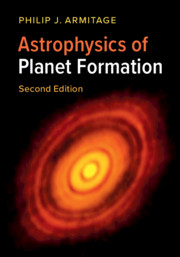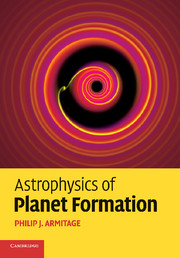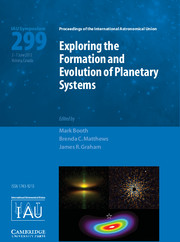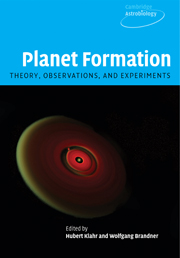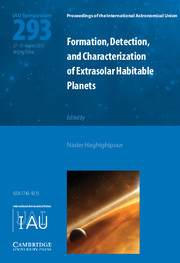Astrophysics of Planet Formation
Concise and self-contained, this textbook gives a graduate-level introduction to the physical processes that shape planetary systems, covering all stages of planet formation. Writing for readers with undergraduate backgrounds in physics, astronomy, and planetary science, Armitage begins with a description of the structure and evolution of protoplanetary disks, moves on to the formation of planetesimals, rocky, and giant planets, and concludes by describing the gravitational and gas dynamical evolution of planetary systems. He provides a self-contained account of the modern theory of planet formation and, for more advanced readers, carefully selected references to the research literature, noting areas where research is ongoing. The second edition has been thoroughly revised to include observational results from NASA's Kepler mission, ALMA observations and the JUNO mission to Jupiter, new theoretical ideas including pebble accretion, and an up-to-date understanding in areas such as disk evolution and planet migration.
- Currently the only graduate textbook on planet formation from an astrophysical viewpoint, updated and expanded with the most up-to-date observations and latest theoretical developments
- Self-contained, the book brings together concepts from planetary science, star and planet formation, and planetary dynamics
- Covers recent theoretical developments, including pebble accretion, the streaming instability, the role of disk winds in protoplanetary disk evolution, and the role of self-gravity in forming massive planets
Reviews & endorsements
'Eleven years after the publication of its first edition, Armitage revisits this graduate-level textbook on the astrophysics of planet formation to update it based on the trove of knowledge produced by the Kepler space telescope and ALMA that revolutionized our concept of what planetary systems look like. The book covers the structure and evolution of protoplanetary disks and the formation of planetesimals within them, the formation of rocky and giant planets, as well as the evolution of protoplanetary systems. The astrophysics is put into context by an introductory chapter on what observations are currently telling us.' Karouzos Marios, Nature Astronomy
'This book offers to the reader a comprehensive view of all main processes occurring during the planet formation. It serves the task of a perfect introductory book for any student willing to engage in this research topic. It is also an ideal reference to everyone teaching all stages of planet formation and a good support for anyone looking for an overview about physics and key processes of planet formation starting from disk phase. This edition includes most recent developments in the field and a useful suggestion of further reading at the end each chapter.' Didier Queloz, University of Cambridge
'Philip Armitage takes you on an engaging journey through the physical processes of planet formation, while providing both physical intuition and the necessary details and equations. Armitage renders a comprehensive picture of the physics behind the different stages of planetary systems' formation and evolution. He connects the current theoretical understandings with recent observations and highlights new and exciting developments in the field. Read this book and expand your knowledge.' Smadar Naoz, University of California, Los Angeles
'The end product is an absolutely first-class text-book. Armitage always has the needs of his students firmly in mind. His exposition is comprehensive, detailed, thorough, concise, and clear. This is coupled with the fact that the book is beautifully produced, and well-illustrated, and referenced. It will do much to encourage more scientists to move into this fascinating field.' David W. Hughes, The Observatory
'This work is a highly mathematical textbook, drawing on many subdisciplines in physics, chemistry, and geophysics, and designed to train specialists in this complex and rapidly evolving discipline … The field is rapidly changing, with continuing discoveries and theoretical advances, justifying this second edition, and no doubt future editions to come. The book is suitable for students and professionals who are well trained in orbital and fluid dynamics, with some knowledge of other pertinent fields including physical chemistry and magnetohydrodynamics.' S. P. Maran, Choice
Product details
No date availableAdobe eBook Reader
9781108359474
0 pages
102 b/w illus.
Table of Contents
- Preface
- 1. Observations of planetary systems
- 2. Protoplanetary disk structure
- 3. Protoplanetary disk evolution
- 4. Planetesimal formation
- 5. Terrestrial planet formation
- 6. Giant planet formation
- 7. Early evolution of planetary systems
- Appendix 1: physical and astronomical constants
- Appendix 2: N-body methods
- References
- Index.

